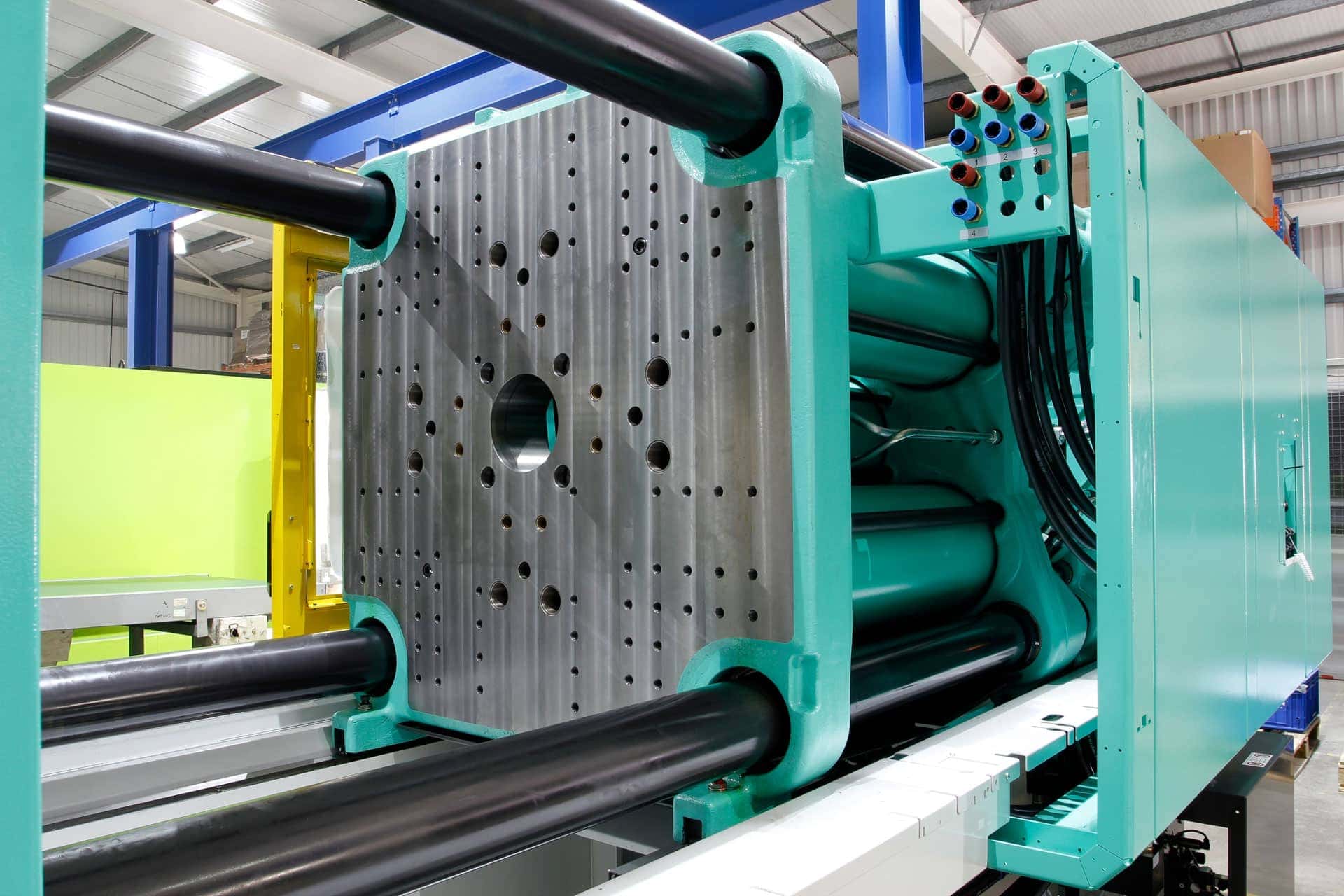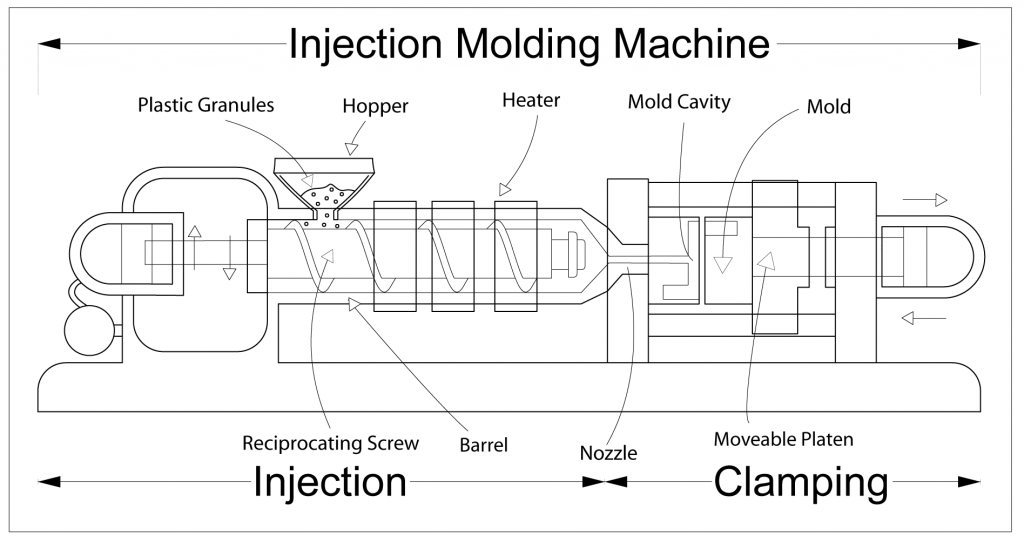Understanding the Basics of Plastic Injection Molding Procedures
Plastic injection molding serves as a cornerstone of modern manufacturing, supplying a systematic strategy to creating complex elements with precision. Discovering these crucial aspects might reveal just how even minor modifications can lead to considerable improvements in manufacturing outcomes, raising questions concerning the capacity for advancement in this well established process.
What Is Plastic Shot Molding?
Plastic shot molding is a widely made use of manufacturing procedure that changes thermoplastic and thermosetting products right into specific and intricate shapes. This strategy is favored for its capacity to produce high volumes of identical components with extraordinary precision, making it a crucial technique in various markets, consisting of vehicle, durable goods, and clinical tools.
The process entails melting the selected plastic product and infusing it into a mold and mildew under high stress. The mold, designed to the specs of the desired component, permits the molten plastic to materialize as it cools and solidifies. Once the material has set, the mold is opened, and the completed element is expelled.
Plastic injection molding provides a number of benefits, including minimized waste, uniformity in manufacturing, and the ability to include intricate designs that may be testing with other making approaches. In addition, it supports a broad series of products, each giving unique buildings that can be tailored for particular applications. As markets proceed to introduce, plastic shot molding continues to be at the center, enabling the development of innovative products that fulfill advancing consumer needs.
The Injection Molding Refine
The shot molding procedure is an innovative method that includes several essential stages to produce premium plastic elements. Initially, plastic pellets are fed right into a warmed barrel where they are melted right into a viscous liquid. This molten plastic is then injected under high pressure right into a precision-engineered mold and mildew, which shapes the material right into the preferred type.
As soon as the mold and mildew is filled up, the plastic is enabled to solidify and cool down, taking the shape of the mold and mildew tooth cavity. Cooling time is vital, as it influences the cycle time and the last properties of the shaped part. After enough air conditioning, the mold opens up, and the completed part is expelled using ejector pins.

Products Utilized in Shot Molding
Numerous products can be used in the injection molding process, each offering distinct homes that satisfy certain applications. One of the most generally made use of products consist of thermoplastics, thermosetting plastics, and elastomers.

Thermosetting plastics, like epoxy and phenolic materials, go through a chemical change during the healing procedure, causing a rigid, inflexible framework. These products are suitable for applications requiring high heat resistance and structural integrity, commonly used in electric insulators and auto parts.
Elastomers, including silicone and rubber-based products, give versatility and resilience. Their one-of-a-kind buildings make them suitable for applications that demand flexibility, such as gaskets and seals.
Furthermore, specialized materials like bio-based plastics and composites are acquiring grip for their environmental benefits and improved performance features, broadening the range of injection molding applications in different industries. Understanding the residential or commercial properties of these products is critical for choosing the proper kind for details tasks.
Benefits of Injection Molding
Injection molding stands apart as an extremely reliable production procedure that supplies countless advantages for creating complicated get rid of precision. read One of the most significant benefits is the capacity to create elaborate designs that would be challenging or impossible to attain with various other methods (Plastic Injection Molding). The procedure enables for detailed attributes and limited tolerances, making certain top quality components
Additionally, shot molding is known for its rapid manufacturing abilities, making it an optimal option for high-volume production. Once the mold and mildew is produced, components can be produced quickly, reducing preparations and enhancing general performance. This effectiveness not just reduces production expenses yet also provides an one-upmanship in the marketplace.
The adaptability of materials made use of in injection molding even more boosts its charm. A vast range of thermoplastics and thermosetting polymers can be used, enabling suppliers to choose products that ideal fulfill their particular needs, consisting of stamina, flexibility, and warm resistance.
Furthermore, the procedure minimizes waste, as excess product can frequently be recycled and reused. This sustainability element contributes to a minimized environmental impact, making injection molding an accountable manufacturing option. Overall, the advantages of shot molding make it a preferred technique for lots of sectors.
Elements Influencing Item Top Quality
While numerous factors can influence product high quality in shot molding, comprehending these components is essential for accomplishing ideal results. Secret aspects consist of product selection, processing specifications, and mold and mildew style.
Product selection plays an important function, as different polymers exhibit special properties that affect flowability, stamina, and thermal security. Inadequate material choice can lead to defects such as warping or incomplete filling.
Processing parameters, including cycle, stress, and temperature level time, need to be thoroughly managed. Variations in these setups can cause incongruities partly measurements and surface best site area finish. As an example, exceedingly heats may cause degradation of the polymer, while inadequate pressure can result in brief shots.
Mold and mildew style is just as vital, as it establishes the circulation of the molten plastic and the cooling process. Poorly created mold and mildews may lead to unequal cooling rates, resulting in recurring anxieties and dimensional inaccuracies.

Verdict
In conclusion, plastic injection molding offers as an important production procedure that makes it possible for the reliable production of top quality elements. Mastery of the injection molding process, including the understanding of materials and the influence of various factors on product top quality, is necessary for attaining ideal results. The benefits of this technique, such as cost-effectiveness and layout adaptability, further highlight its importance across numerous sectors, solidifying its status as a preferred selection for high-volume manufacturing.
Plastic injection molding offers as a cornerstone of modern production, giving a methodical approach to generating complicated components with accuracy.Plastic shot molding supplies a number of benefits, including decreased waste, uniformity in production, and the capacity to include complex designs that might be challenging with other producing approaches (Plastic Injection Molding). As markets continue to introduce, plastic shot molding continues to be at the leading edge, enabling the advancement of sophisticated products that fulfill developing customer needs
The injection molding process is an innovative technique that entails numerous essential phases to produce high-grade plastic elements.In conclusion, plastic shot molding offers as a vital manufacturing process that makes it possible for the efficient manufacturing of high-quality parts.